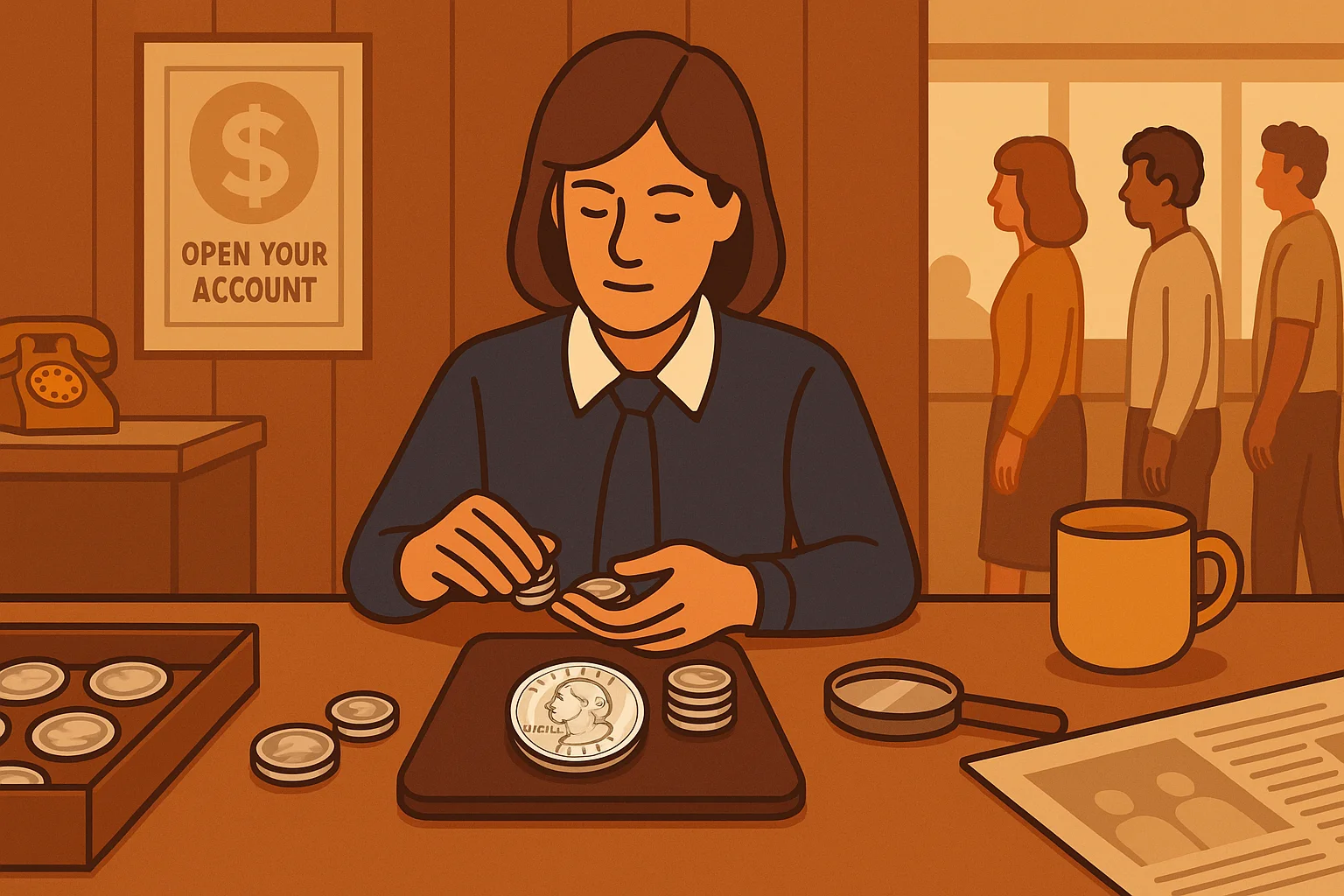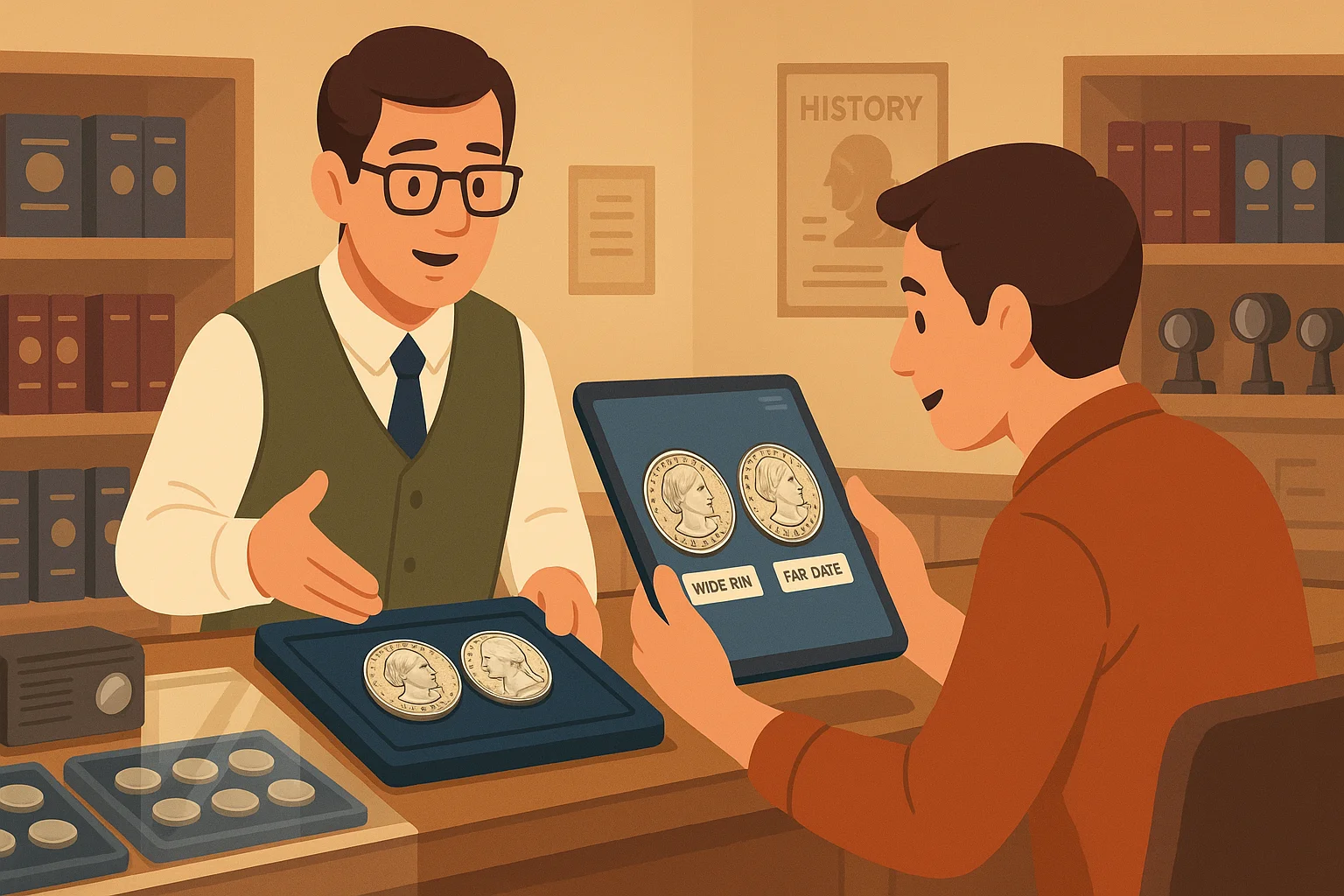At first glance, the 1979 dollar coin might look like another piece of pocket change, but to numismatists it carries an extraordinary story. Popularly called the Susan B. Anthony dollar, this coin is tied to a unique moment in U.S. monetary history, marked by innovation, controversy, and symbolism. For collectors, it represents both progress in design and a challenge in circulation, making it a fascinating case study in how history shapes value.

Historical Context: A Coin for Change
The push for a new dollar coin gained momentum in the late 1970s, driven by the need for efficiency. The bulky Eisenhower dollar, first issued in 1971, proved impractical for daily transactions—too large and too heavy for widespread use. Seeking a smaller, more cost-effective alternative, Congress passed the Susan B. Anthony Dollar Coin Act, signed by President Jimmy Carter in 1978.
The coin that emerged in 1979 marked a milestone: it became the first U.S. coin to feature a real woman, honoring Susan B. Anthony, the suffragist whose relentless fight for women’s voting rights reshaped American democracy. Her presence on the coin broke centuries of tradition dominated by allegorical figures or male leaders.
Distinctive Design Features
Chief Engraver Frank Gasparro crafted the design, aiming to blend modern practicality with symbolic imagery. On the obverse, Anthony’s portrait appears right-facing, framed by 13 stars, with the inscriptions “LIBERTY” and “IN GOD WE TRUST.” The reverse reuses the eagle-on-the-Moon motif from the Eisenhower dollar, commemorating the Apollo 11 landing and celebrating America’s achievement in space exploration.
What set the coin apart technically was its 11-sided border within a round shape, a unique rim intended to help machines differentiate it from quarters. Despite this innovation, the coin’s diameter (26.5 mm) and silvery copper-nickel clad composition caused widespread confusion. Many mistook it for a quarter, undermining its acceptance in circulation.
Collectible Varieties and Valuation
Varieties That Capture Collector Interest
Although the 1979 Susan B. Anthony dollar struggled in daily commerce, it produced several collectible varieties that fascinate numismatists today. The most notable include:
1979-P Near Date (Wide Rim): The spacing between the date and the coin’s rim is noticeably tighter, creating a bolder look. This variety is rarer and more valuable than the common Far Date version.
1979-S Proof Type 1 vs. Type 2: Proof coins minted in San Francisco exist in two types. Type 1 features a blob-like, filled “S” mintmark, while Type 2 has a clearer, well-defined “S.” Type 2 proofs are scarcer and command stronger premiums.
Mint Errors and Die Varieties: Collectors actively pursue off-center strikes, double strikes, or other minting anomalies from the series.
These differences may seem subtle, but they significantly affect desirability and price.
Value Ranges of the 1979 Susan B. Anthony Dollar
Condition and variety play the biggest roles in determining market worth. While circulated coins are common and inexpensive, high-grade uncirculated pieces and proofs can reach impressive values.
Variety / Type | Grade | Estimated Value Range |
1979-P Far Date (Common) | Circulated | $1 – $2 |
1979-P Near Date (Wide Rim) | MS-65 | $50 – $150 |
1979-D | MS-65 | $5 – $20 |
1979-S Proof Type 1 | PR-65 | $10 – $20 |
1979-S Proof Type 2 | PR-65 | $50 – $125 |
Error Coins (off-center, double strike, etc.) | Varies | $100 – $1,000+ |
Auction records show that rare high-grade examples of the 1979-P Wide Rim or 1979-S Type 2 proof can sell for hundreds of dollars, while unusual mint errors sometimes climb into the thousands.
Why Collectors Care
For numismatists, the 1979 Susan B. Anthony dollar stands at the intersection of history and design. Its cultural significance as the first coin to honor a real woman, combined with these collectible varieties, ensures it remains more than a curiosity—it’s an important chapter in the U.S. dollar coin story.

Modern Tools, Market Lessons, and Lasting Legacy
How Technology Simplifies Collecting
Spotting the difference between a common 1979-P Far Date and the scarcer Near Date (Wide Rim) can be tricky, even for experienced collectors. Similarly, distinguishing a Type 1 proof from a Type 2 proof requires a sharp eye. Today, numismatists can avoid uncertainty by using digital tools like the Coin ID Scanner app (available for Android and iOS).
With just a photo upload, the app provides:
Instant Identification: Year, mint mark, variety, composition, weight, and estimated value.
Extensive Database: Over 187,000 coins worldwide for comparison, including U.S. dollar series.
Collection Management: A digital way to organize and track coins, including proofs and varieties.
AI Coin Helper: Guidance for identifying subtle differences or mint errors.
For hobbyists, travelers, and seasoned collectors, this kind of technology makes evaluating and managing coins like the 1979 Susan B. Anthony dollar simple, accurate, and enjoyable.
Market Insights and Collector Tips
While most 1979 dollars are affordable, certain varieties have steadily grown in demand. Collectors should:
Prioritize uncirculated or proof coins with strong eye appeal.
Look for Near Date (Wide Rim) and Type 2 proofs, as they command premiums.
Consider professional grading for coins suspected of having higher value.
Use trusted apps and auction records to keep track of market trends.
The lesson of the 1979 dollar is clear: even a coin once rejected in everyday life can gain long-term interest when collectors recognize its unique history and varieties.
Why the 1979 Dollar Still Shines
The 1979 Susan B. Anthony dollar embodies both progress and challenge. It was the first U.S. coin to honor a real woman, marking an important step toward representation, yet it stumbled in circulation due to its resemblance to a quarter. Today, it shines as a collectible, with varieties and proofs fetching respectable premiums.
For collectors, it represents more than money—it’s a reminder that design, culture, and history all influence value. And with tools like Coin ID Scanner, enthusiasts can uncover those details with ease, making the Susan B. Anthony dollar an enduring part of numismatic storytelling.



